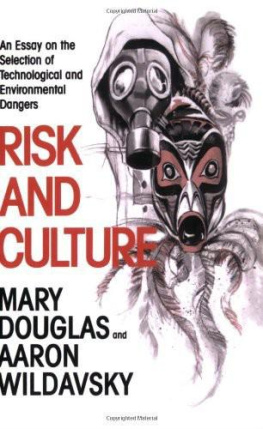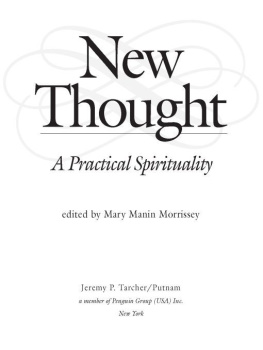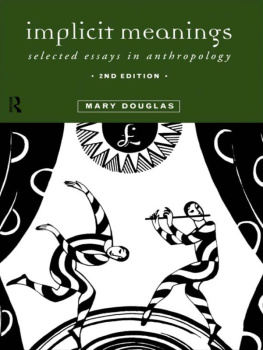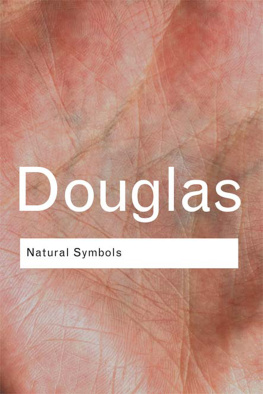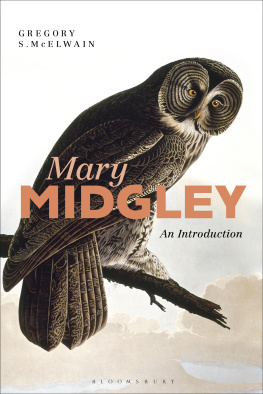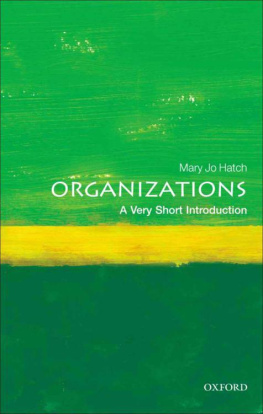Cover
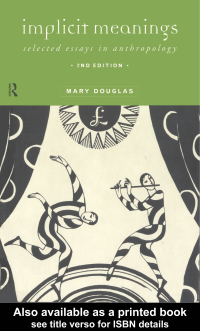
| title | : | Implicit Meanings : Selected Essays in Anthropology |
| author | : | Douglas, Mary. |
| publisher | : | Taylor & Francis Routledge |
| isbn10 | asin | : | 0415205549 |
| print isbn13 | : | 9780415205542 |
| ebook isbn13 | : | 9780203159828 |
| language | : | English |
| subject | Ethnology, Anthropology. |
| publication date | : | 1999 |
| lcc | : | GN304.D68 1999eb |
| ddc | : | 301 |
| subject | : | Ethnology, Anthropology. |
Page i
Implicit Meanings
This new edition of a classic work provides an indispensable introduction to the thought of Mary Douglas.
First published to great acclaim in 1975, this second edition of Implicit Meanings includes a new introduction with Mary Douglass reflections on how her ideas have been taken up and how her own thinking has developed over the last forty years.
Implicit Meanings includes writing on the key themes which are associated with Mary Douglass work and which have had a major influence on anthropological thought. Essays on animals, food, pollution, risk, joking, sorcery and myth derive from initial fieldwork experiences in Africa. In different ways, the essays probe beneath the surface meanings and seek to expose the implicit understandings which tend to be taken as unchallengeable. Mary Douglas has shown that anthropology can make a central contribution to debates in many academic disciplines, and can also illuminate everyday life.
Mary Douglas is a distinguished international anthropologist. She retired as Professor of Anthropology at University College London, and taught in the USA until 1988. Her books include Purity and Danger (1966), Natural Symbols (1970), The World of Goods (1979), How Institutions Think (1986), and Risk and Blame (1992).
Page ii
Page iii
Implicit Meanings
Selected Essays in Anthropology
Second Edition
Mary Douglas

London and New York
Page iv
First published 1999 by Routledge
11 New Fetter Lane, London EC4P 4EE
Simultaneously published in the USA and Canada
by Routledge
29 West 35th Street, New York, NY 10001
Routledge is an imprint of the Taylor & Francis Group
This edition published in the Taylor & Francis e-Library, 2001.
1975, 1978, 1999 Mary Douglas
Figures 3.1, 3.2, 19.1 and 19.2 were drawn by Pat Novy.
All rights reserved. No part of this book may be reprinted or reproduced or utilised in any form or by any electronic, mechanical, or other means, now known or hereafter invented, including photocopying and recording, or in any information storage or retrieval system, without permission in writing from the publishers.
British Library Cataloguing in Publication Data
A catalogue record for this book is available from the British Library
Library of Congress Cataloging in Publication Data
Douglas, Mary.
Implicit meanings: selected essays in anthropology/Mary Douglas. 2nd ed.
p. cm.
Includes bibliographical references.
1. Ethnology. I. Title.
GN304.D68 1999
301dc21 9919937
CIP
ISBN 0-203-02990-9 Master e-book ISBN
ISBN 0-203-15982-9 (OEB Format)
ISBN 0-415-20553-0 (hbk)
ISBN 0-415-20554-9 (pbk)
Page v
Contents
Preface, 1999 | vii |
Preface, 1975 | xi |
PART 1 Essays on the implicit | |
Introduction | |
1 The Lele of the Kasai | |
2 Social and religious symbolism of the Lele | |
3 Animals in Lele religious symbolism | |
4 Techniques of sorcery control in Central Africa | |
5 Sorcery accusations unleashed | |
6 Looking back on the 1950s essays | |
PART 2 Critical essays | |
Introduction | |
7 Pollution | |
8 If the Dogon... | |
9 The meaning of myth | |
10 Jokes | |
11 Do dogs laugh? | |
Page vi
12 Couvade and menstruation | |
13 The healing rite | |
14 Obituary of Godfrey Lienhardt | |
15 Looking back on the 1960s essays | |
PART 3 Essays on the a priori | |
Introduction | |
16 Environments at risk | |
17 The depoliticisation of risk | |
18 Deciphering a meal | |
19 Self-evidence | |
20 Rightness of categories | |
21 Looking back on the 1970s essays | |
Index | |
Page vii
Preface, 1999
Starting to do anthropology, no one knows in advance where it is going. These essays mark where the first twenty years of that voyage took me. Anyone interested in belief, religion, and symbols looks to anthropology for insight. These essays are all either saying the same message, or providing some necessary background. The message is that it is useless to look for the meaning of a symbol, useless to take meanings one at a time, item by item, expecting to find something that will translate into our language. Meaning is part of a constructed world, the problem of understanding symbols is how to take a grip on a whole world. What is actually said in words is only the tip of the iceberg. The unspoken understandings are essential. How do we reach the implicit? By studying the classifications by which people decide if an action has been done well or badly, whether it is right or wrong. This is what these essays are saying.
There are two main justifications for anthropology. First is the imperative to make a full record of human society. That has little to do with disappearing cultures and much to do with the huge variety of ways of being human. Those who take on that project usually adopt an area, say the South Pacific, or India, China, or Japan, or the arctic circle, or west, south, east or central Africa, America, or wherever. They become regional experts and with like-minded colleagues they study the varieties of languages, agriculture, religion, and so on within their region.
Next page

